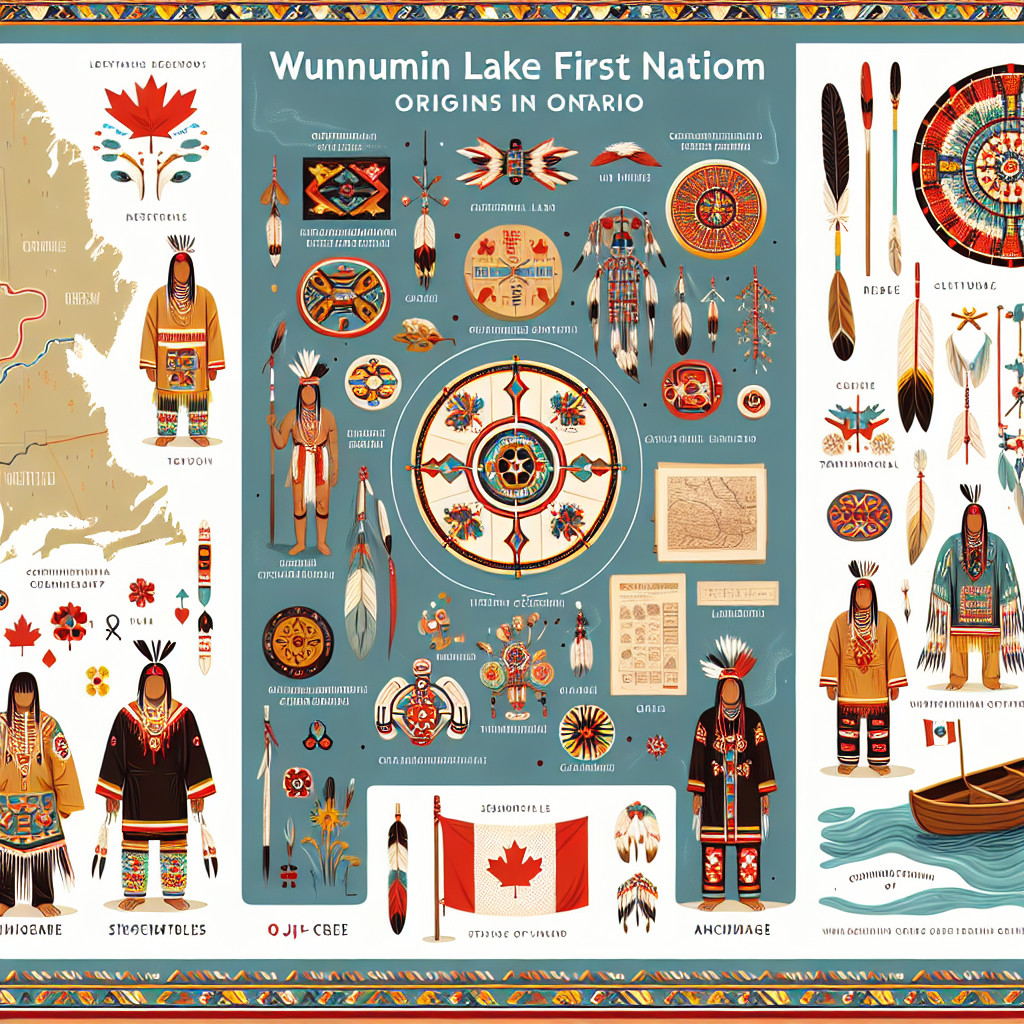Nestled in the verdant expanses of Northwestern Ontario, the Wunnumin Lake First Nation, primarily Oji-Cree, has sustained a rich tapestry of culture and tradition against the backdrop of Canada’s sprawling landscapes. Their ancestral territories, marked by dense forests and vast lakes, have been both a cradle and a crucible, shaping a community that reveres the land as both sustenance and sacred sanctuary. Today, amidst modern geopolitical shifts, this First Nation balances the preservation of its cultural heritage with the challenges and opportunities of the 21st century.
Organización social y política
Índice
The social fabric of the Wunnumin Lake First Nation is intricately woven with clan affiliations that dictate social duties and spiritual alignments. Leadership traditionally emerges from a council of elders, with chiefs often selected based on wisdom and experience rather than ambition. Gender roles are distinct yet complementary, ensuring a harmonious societal flow. Importantly, decision-making processes are deeply democratic, often involving community gatherings where every voice, especially those of the elders and spiritual leaders, is valued. These traditional systems remain resilient, continuing to guide the community.
Lengua
The Oji-Cree language, a blend of Ojibwe and Cree, is a linguistic ribbon tying the community to its ancestors. Currently considered vulnerable, efforts to revitalize the language are robust, reflecting its integral role in rituals and its capacity to convey complex cosmological concepts. The language’s vocabulary is rich with terms that lack direct translations into English, emphasizing the unique worldview of the Oji-Cree.
| Palabra en Oji-Cree | Significado |
|---|---|
| Keewaydin | Viento del norte, espiritualidad |
| Manitou | Gran espíritu |
| Aki | Tierra |
| Mishomis | Abuelo, anciano respetado |
| Neechee | Amigo |
| Wiisini | Comer, un acto de comunidad |
Territorio y relación con la tierra
The ancestral lands are more than just a backdrop for daily activities; they are imbued with spiritual significance, hosting sacred sites and guiding the sustainable use of resources. Rivers like the Miminiska and Attawapiskat are not only water sources but also spiritual veins that nourish both land and soul. The Oji-Cree’s connection to the territory is a profound embodiment of their spirituality, with every plant, animal, and stone holding a story.
Creencias religiosas y cosmovisión
Central to Oji-Cree spirituality is a pantheon of spirits and natural forces, each woven into the fabric of their cosmology. The Manitou (Great Spirit) is a key figure, embodying the interconnectedness of all life. Rituals, often accompanied by drumming and dance, mark significant life events and seasonal changes, facilitating a deep bond with the spiritual world. Sacred animals like the bear and the eagle are not only revered as spiritual guides but also respected as kin.
Sabiduría ancestral y medicina tradicional
The Oji-Cree possess deep botanical knowledge, passed down orally through generations. Plants like sage, cedar, and sweetgrass are used not only for physical healing but also in spiritual cleansing rituals. The community’s healer, or shaman, plays a crucial role, utilizing both herbs and sacred objects like the eagle feather to maintain both communal and individual health.
Cultura y tradiciones
Cultural expressions through dance, music, and oral narratives are pivotal in Oji-Cree life. Traditional dances and the sound of the drum reconnect the community with their history and the heartbeat of the Earth. Tales of the Trickster, Wesakechak, are popular among children and adults alike, teaching morals and the history of the people.
Vestimenta
Traditional attire, often adorned during ceremonies, features materials like deerskin and intricate beadwork, each element symbolizing aspects of Oji-Cree life and beliefs. The use of colors and symbols, such as the turtle (representing Earth) or the eagle (sky), narrates an unspoken story of connection to nature and the ancestors.
Educación y preservación cultural
Knowledge transmission is dynamic, encompassing both formal education and community-based learning. Elders play a pivotal role as cultural bearers, while initiatives like language immersion schools represent a proactive approach to cultural preservation. The community’s future vision includes a balanced integration of traditional wisdom with modern educational tools.
Reflexiones
The resilience of the Wunnumin Lake First Nation is a testament to their deep-rooted connection to their heritage and land. Despite contemporary challenges, their enduring traditions and spiritual practices offer profound insights into the stewardship of nature and the importance of community. Their legacy is not merely a relic of the past but a living, breathing dialogue with the present and future, offering valuable perspectives for both their descendants and the global community.







